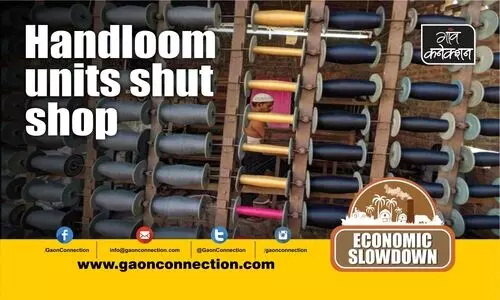Last year, Mohammad Ufran sold four
handlooms, a warping machine and a binder that he had bought with hard-earned
money as scrap and opened up a kirana store in his village. In order to
supplement his income, he has even placed a sewing machine in the shop.
Ufran, 55, is a resident of Bijnor’s
Serahvillage, which is about 175 km from Delhi. Previously known as the
handloom hub, Bijnor now witnesses several handloom units closing down. People are
wrapping up their ancestral trade are resorting to other means of livelihood.
Gaon Connection reached Serah to find
Ufran sitting at his Kirana shop. Upon being asked the reason for wrapping up
of his earlier work, he said: “In 2013, when I began working, my work thrived,
but then losses followed the note-ban and the subsequent Goods and Services Tax
(GST) made the goods expensive. The labour moved elsewhere. Forcibly I had to
sell my machines in scrap last year where the machines costing Rs 2.5 lakh,
fetched me Rs 25-30,000.”
Uttar Pradesh’s Bijnor district is
well known for its handloom craftsmanship. About 35 kms far from the district headquarters,
Nathaur had, till some time ago, every house engaged in handloom craft. But now
this trade survives even less than 50%. As per the traders, while the village
had 2.5 lakh machines installed once, their number has now dwindled to barely a
45,000.
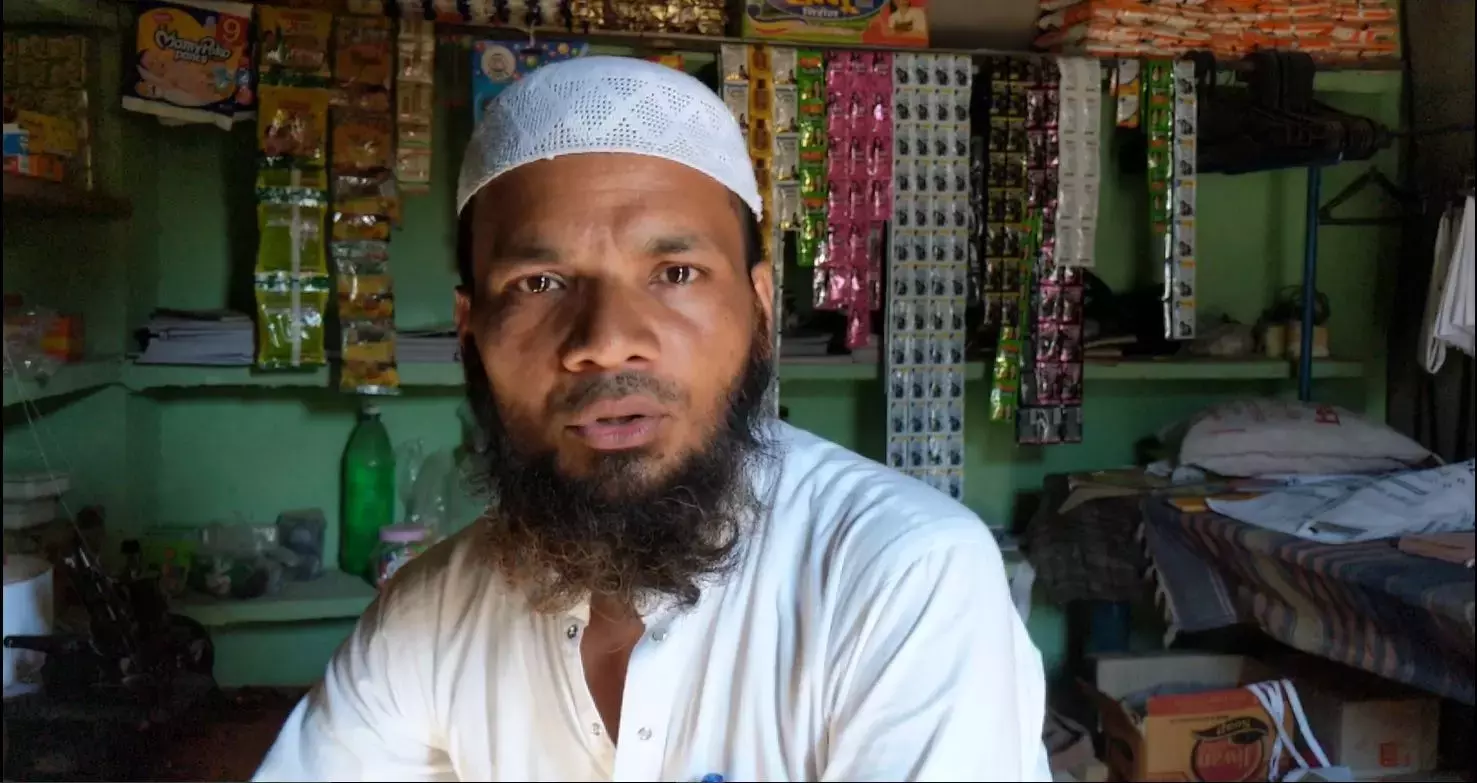 Mohammad Ufran
Mohammad Ufran
Besides Bijnor, Uttar Pradesh’s
Azamgarh, Varanasi, Bhadohi, Mirzapur, Ghazipur and many more districts engage
in handloom craft. As per the 2009-10 Handloom Census, 43 lakh people in the
country are associated with this trade. But since the last decade, the handloom
work has witnessed a sharp decline.
As per a report of Export-Import Bank
(EXIM), the total Indian handloom products export for the year 2013-14 was
worth Rs 2,474 crore. It came down to Rs 2,444 crore in 2014-15.
The decline continued in 2015-16 to Rs
2,394 crore, Rs 2,365 crore in 2016-17 and in 2017-18 the total export had
registered Rs 2,354 crore. Once India leads the handloom product export in the
world with a 95% share in the international markets.
The state of imports clarifies the
total scenario. In the year 2013-14, the country’s import of handloom product
was worth Rs 125 crore with a minor dip in 2014-15 to Rs 67 crore it improved in
2015-16 to Rs 69 crore.
But the very next year, the imports
dropped to Rs 35 crore whereas in 2017-18 it showed a remarkable rise to Rs 71
crore telling of the present state of the Indian handloom industry.
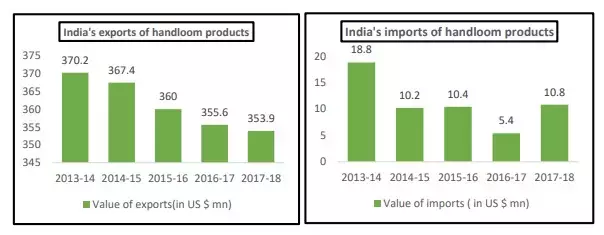
As per the records of Ministry of
Textiles, Government of India, employment, along with the production, has gone
down substantially in the handloom industry. Annual production of handloom
textiles have fallen from 64,333 million sq meters in 2014-15, to 63,480
million sq meters in 2016-17.
The turbulent times faced by this
multi-million-dollar industry, depicted in the formidable statistics of these
records have begun showing the impact on normal life as is witnessed in places
like Bijnor. Bijnor’s Nathaur, Phoolsanda, Sedhi, Sedha, Milak, Karaunda,
Rawana Shikarpur, Basta, Pipali, Syohara, Tajpur, Nurpur, Chandpur, and
Naginaetc, were known for weaving.
This district of Uttar Pradesh used to
attract weavers from across the country. The scarves, stoles, turban cloth,
bedsheets and mufflers woven here were sold widely India and internationally.
Nathaur region’s 100 villages used to work with the handloom-power loom, including
Sedha which is now devoid of the activity.
When we approached the seniormost
trader of Sedhavillage, Zulfekar Ali, 53, we found him fanning himself with a
hand-held fan, surrounded by people who had gathered in his house to celebrate
the wedding in the neighbouring house.
Being inquired about the state of
handloom, he said: “You can see for yourself what the situation is. It is 2 PM
and there isn’t any electrical supply since 10 PM last night. In such heat we
cannot function without electricity. There isn’t any more work. Whatever little
work of the local market we get, the craftsmen begin working upon as soon as
the power resumes. I had 10 power loom machines out of which I’ve sold eight. The
remaining two perform whatever work comes our way.”
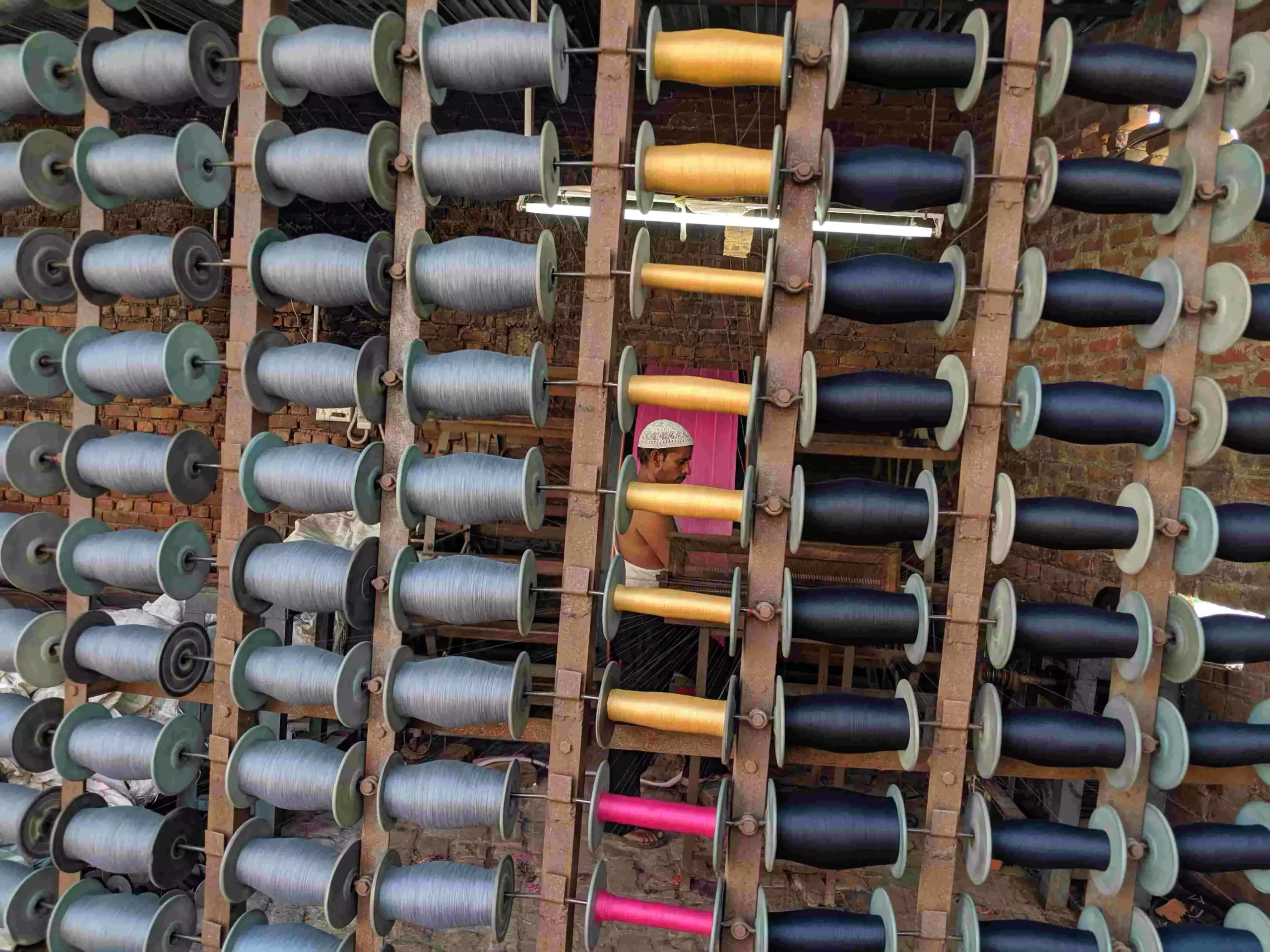
In the textile industry, hand operated
machines are called handlooms and electricity run machines are called power looms.
How did the industry get hit? Zulfekarsaid:
“It’s not that our work stopped suddenly. Note ban had resulted in cash-flow
problems for us. Labourers abandoned their work and left due to which the
existing orders could not be executed. Due to this, we were unable to secure
fresh orders so power loom or handloom—everything came to a stop. Powerloom also
require human effort to operate it.”
Talking about the implications of the
GST, he said: “We pay 12% tax on raw material while the same material when
processed attracts only 5% tax, this means we suffer a loss of 7%. The government
says that cloth made from the raw material is sold at an escalated price and so
doesn’t return us our money.”
Zulfekar’s two sons who used to assist
him have left to work in cities. Zulfekar resigns saying, “Employing 10-12
regular workers earlier, it so came to pass that today my own sons have to work
for someone else.”

Just like Bhadohi’s carpets, the
craftsmanship of this place was much appreciated in the US and European
markets. Introduction to power loom didn’t bring any significant change.
“The district’s annual handloom
turnover used to exceed Rs 250 crore, but now it has shrunk to Rs 50 crore,” Jalauddin,
51. He had been one of the districts’s top exporters with his own eight machines. He
said: “The local handloom industry was employing over 15,000 individuals
directly and over 80,000 indirectly. The whole network has evaporated into thin
air.”
Jalaluddin is one of those people
doing handloom work across generations, but the present state of the industry
disappoints him. His tone betrayed helplessness when he said: “Previously our
workmanship used to be appreciated widely, but with China’s foray in the market
our business suffered. The situation took a worse turn from 2016—first note-ban
and then GST. We could not recover fully from these two setbacks. The state
government’s apathy on the matter is not helping the situation either.”
Bijnor’s entrepreneurs suffer a major
setback of erratic power supply with prolonged power cuts. Jalauddin tells,
“The government claims that it is supplying 17-18 hour’s electricity whereas
the reality is in front of you. Rate of payment has also been increased. With
the increase in cost, we are left with no alternative but to close our
operation. Previously we used to work full days amid the constant din of handloom
machines, but now we are left lamenting over our inability to keep alive our
ancestral trade.”
The country’s textile industry
currently suffers from a slump. The Northen India Textile Mills Association’s
report shows that the country’s textile business is in the worst phase of the
past 10 years. Last time the industry faced such slump only in 2010-11.
In the trimester April-June2019, the
export of cotton-based products has fallen by over 34%. Last year, about the
same time, this trade recorded a turnover of $1,063 million which has plummeted
this year to $696 million.
The Nation’s 10 crore people are
employed in the textile sector which contributes 2% of the national GDP. With
the fall in the trade, lakhs of people have lost employment.
Nathaur’s Afsar Ahmed, 41, weaves
himself and offers employment to others. Explained the jump in input costs, he
said: “A 2 meter long and 28inch wides stole takes 2-3 hours to be woven. Just
weaving costs Rs 80 whereas we get Rs 78-80 in the market as its price. If we
get Rs80, we breakeven, anything less we incur a loss. We used to earn Rs15-18
per piece when the input cost was low.”
As per Afsar, he doesn’t do any work
following the GST and he is also not aware of it, but he knows for sure that
electricity bills have gone up, the price for cotton yarn has gone up, but his
profit hasn’t.
West Bengal leads the country in the handloom industry followed by Andhra Pradesh. Mohan Rao, head of Andhra
Pradesh’s nationwide NGO Rashtra Chetna Jan Samakhya, told Gaon Connectionoverover
the phone: “It’s a fact that the government is itself responsible for the
current situation. A look at the budget can clarify government’s intent which
had sanctioned Rs 621.51 crore for the textile sector in 2014-15 and thereafter
reducing to Rs 486.60 crore in the year 2015-16. However, the said amount was
increased substantially in 2016-17 to Rs 710 crore.”
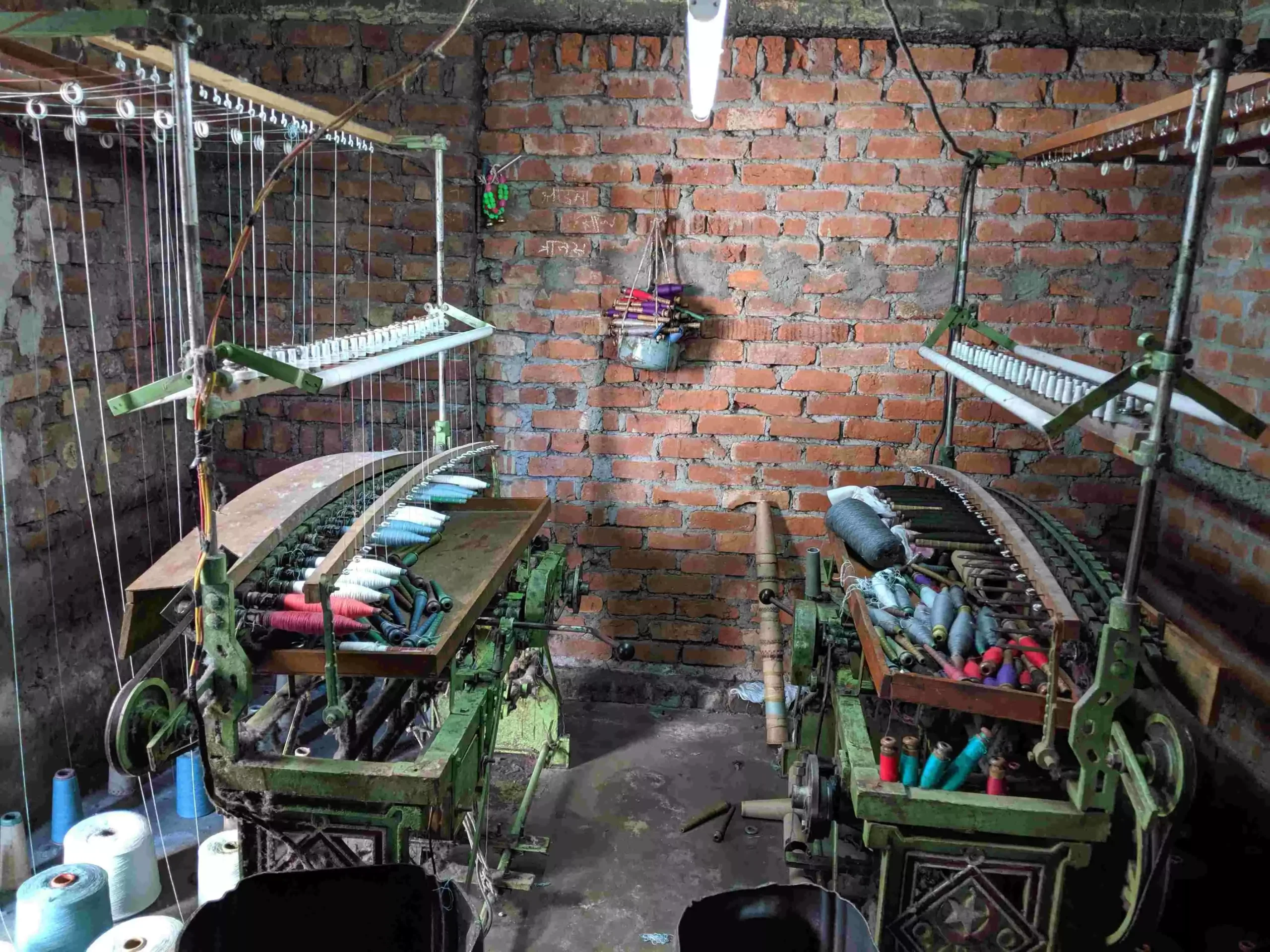
He added: “The budgetary cuts began
thereafter—for 2017-18 the amount was reduced to Rs 604 crore and further
reduced in 2018-19 to Rs 386 crore. For 2019-20, the amount was improved
marginally to Rs 456.80 crore. But still, the budgeted amount remains less than
the one sanctioned in 2014-15.”
Last decade has seen a decline in the
sector with hardly any development of new employment opportunities. As per the
third Handloom Census 2009-10, the country had 43 lakh weavers whereas the
second Census showed 65.5 lakh weavers employed in the sector. Fourth Handloom
Census was to be declared in 2017 but has not been so far.
Mohan Rao said: “The government had
promoted automation at the cost of handiwork. Our workmanship was our hallmark
which helped popularize our products internationally. Everyone has machines.”
The truth of Mohan Rao’s allegations
resonates about 2000kms far from Andhra Pradesh in exporter Mohd Shahid’s
godown at Bijnor’s Mohalla Nohada in Nathaur. The godown maintains a stock
worth about Rs 25 lakh but has no buyer. Shahid’s scarves were well sought
after in the European markets, but today his production has almost closed down.
Shahid said: “This stock is lying for
the past-one-and-a-half year for want of a buyer. I too have started crockery
business. Previously I employed 50-60 people. Many village women used to come
here to earn for their families, in order to marry off their daughters, but now
we being ourselves out of work can hope little to help others.”
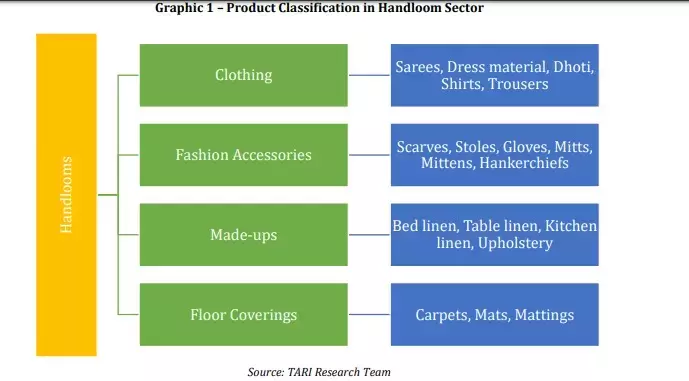
Removing dust off the bundles of
clothes shahid added: “After closing our export unit, we attempted the local
market, but the prices were quite low. I now have barely 10% of the work
remaining. Not only my work but also that of yarn dyers, knitters and binders
has come to a stop.”
KP Verma, deputy commissioner of Uttar Pradesh’s
Handloom and Textiles Industry has a different take on the entire issue. He
informed Gaon Connection over the phone: “Although it is a fact that the
handloom trade is on a decline, the government is not responsible for it.
The younger generation doesn’t believe in exhorting itself which resulted in
the increased use of power looms. As for the government, it is running several
schemes to benefit the handloom industry.” He added that the field has shown
tremendous competition with immense choices for the consumer. This also
contributes to the slowdown in the handloom industry.
But in Bijnor presently even power looms have fallen silent. As per the records of Indian Ministry of
Textiles, out of total textile production in the country, handloom occupies 20%,
weaving comprises 15% and power loom comprises 60% besides 5% contributed by
other organized sectors.
The country currently has 19.42 lakh power looms in operation providing employment to about 70 lakh people.
Also Read: “It’s been months since I paid my kids’ school fees”: Kashmiri carpet weaver

